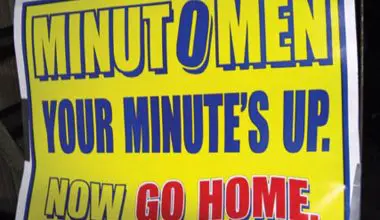Police shootings are receiving more scrutiny than ever before. Any perceived miscarriage of justice, whether right or wrong, can and has affected the perception of the courts and juries who are the ultimate arbiters of whether or not the application of deadly force was appropriate. The real work essentially ensues after the last trigger press.
I have discussed the ability of officers to effectively articulate all actions prior to, during, and after an Officer Involved Shooting (OIS). This is of paramount importance when presenting a case before the courts. Omissions, malapropisms, improper verbiage, and incorrect or conflicting statements can destroy an otherwise justifiable shooting.
Those who question you, whether for monetary or altruistic reasons, possess greater skills than ever before. One chink in the armor can open up doubt and distrust and turn a legitimate case upside down.
Some departments have full-time detectives who do nothing but investigate shootings. LAPD has such a unit, now referred to as FID (Force Investigation Division). Years ago it was RHD/OIS (Robbery Homicide Division Officer Involved Shooting Section), which sounded a bit more Philip Marlowe, Humphrey Bogartish. Regardless of the title, these units do nothing but investigate OISs. They have become extremely proficient.
At any one time, a single RHD detective could have 15 or more OIS shooting investigations running simultaneously. In the course of their career, they will investigate hundreds of assigned OIS cases. This equates to experience—vast experience.
They know the questions to pose and the pitfalls to avoid, and they understand how to articulate with greater precision the officer’s thoughts, actions, and conduct throughout the shooting than a detective who only works hubcap thefts does.
It is unfair to expect a detective’s first OIS investigation to cover all the bases. They need experience. Yet this is precisely what has occurred in some OIS investigations I have been involved in when defending an officer’s actions.
Having been involved in this process for 27+ years, I have observed first-hand simple omissions, questions not asked, and conflicting statements not sufficiently resolved that have turned otherwise clean shootings into messy fur balls.
Not all detectives are shooters. Not all detectives are highly proficient or knowledgeable with regard to tactics, marksmanship, weapons manipulation, and the overall process of a field officer’s application of force. The officer involved in the shooting always comprehends to a much greater degree than the detective those indices and factors that led to the shooting, as well as his actions during the incident.
In short, they were there and the detective wasn’t.
What this translates to is that a greater burden is on the involved officer to ensure all the bases are covered in the subsequent investigation. A simple point of fact brought up two weeks post-OIS does not go down well in court. The omission of a point of fact that one (the officer involved, perhaps) suddenly realizes may be of significant importance will not sit well with a jury when it is raised months or years after the fact.
This can lead to the perception of collusion, falsity, or outright dishonesty. “Why didn’t you state this before?” “Didn’t you think this was important?” “How can you remember this now when you didn’t mention it during the initial investigation? Is your memory clearer now than it was two years ago?”
I know from first-hand experience what an OIS investigation entails. I have been there a number of times. It is long, tedious, and exacting. Stressors, tension, and details must be faced and answered for when you are the least likely to want to face and answer for them.
Each shooting I was involved in kept me on scene for another 12 to 15 hours. Multiple walkthroughs, questions, interviews, admonitions, and recounting of specifics are nothing short of exhausting. It was not and never will be much of a party. It requires you to re-compose and steel yourself for a long, exacting and critical phase of the process.
I have a pretty fair handle on how police think, react, and respond to stress. It is readily apparent to me when defending an officer whether he was exacting in his answers or impatient.
It is all on the record in black and white in the facts-in-evidence. It comes through in tape-recorded interviews and videotaped interviews. When you least wish to deal with something is precisely when you must deal with it.
I could compose a volume on past cases I have been involved in, in which single points of fact led to points of contention by oppositional parties.
I can also state that what is seemingly insignificant at the time can have critical implications down the road. One simple question posited at the outset would have circumvented the chink in the armor that will be exploited to its fullest in front of a jury.
As the involved party, you must resolve yourself to ensure that all the facts, input, and decision-making factors are correctly and accurately accounted for. Interviews should end with: “Do you have anything to add?”
This is when you slowly and methodically recount the entire incident in precise detail, regardless of fatigue, frustration, or stress. That which is in evidence cannot be removed from evidence. That which is not accounted for at the time cannot be recounted for at a later time without consequences.
Critical input is essentially derived from you, the first party to the incident, and this is precisely what can make or break an entire case!

